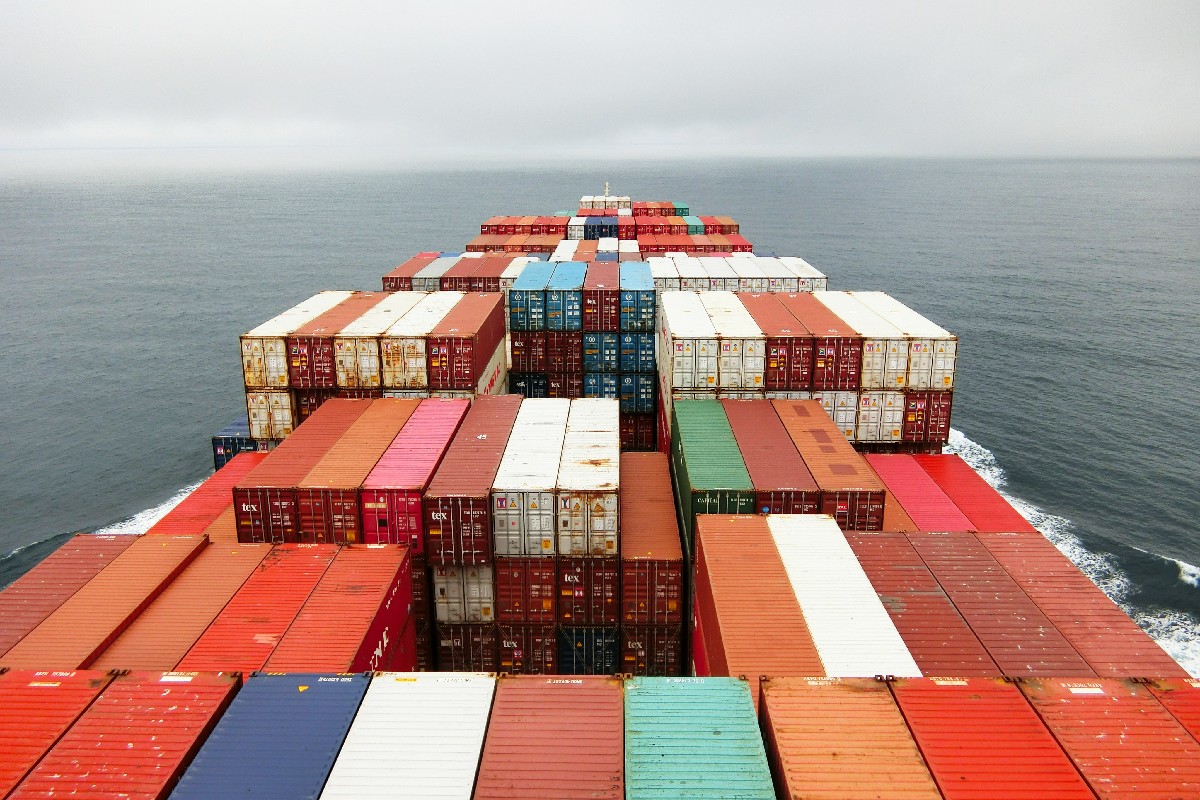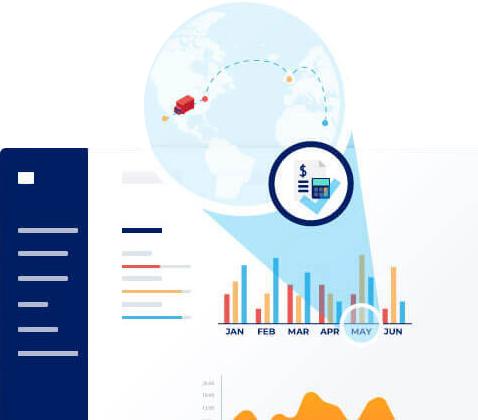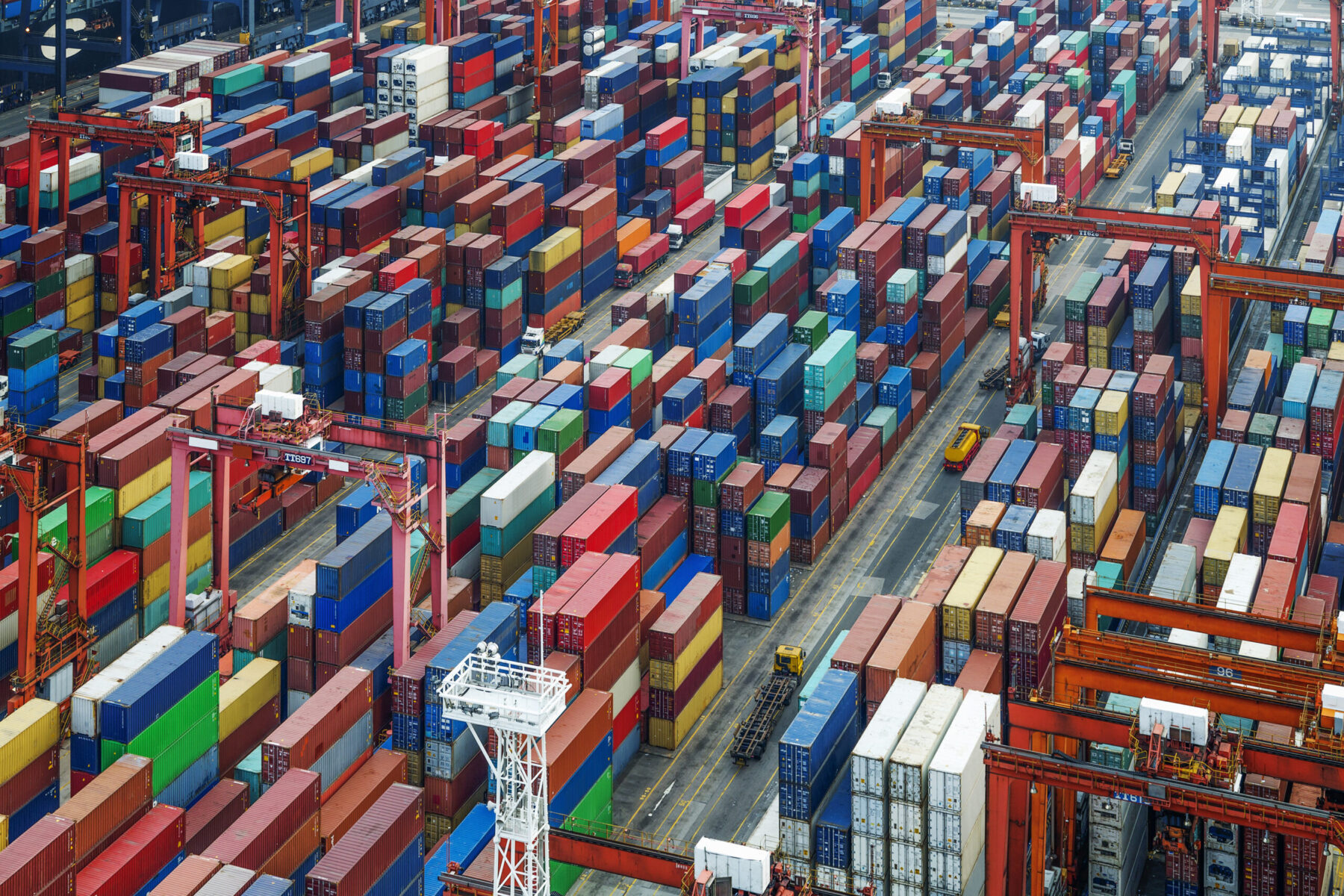4 types of supply chain visibility your supply chain needs
Jul 15, 2022
Scroll to find out more
Jul 15, 2022
Scroll to find out more

In today’s disrupted freight market, supply chain visibility is no longer a nice-to-have. A lack of clarity in your supply chain management leads to increased costs, extended lead times and unhappy customers. However, due to years of under investment, many supply chain teams lack the systems to accurately track activity in their networks.
Here we examine the key types of supply chain visibility that matter today and how supply chain leaders can improve their control.
A key element of true supply chain visibility is that it should cover each stage of your supply chain in turn, as well as multiple levels of macro and micro detail.
Partial supply chain visibility is common – often over stages of which the shipper has direct control, such as ordering – but without the ability to connect the dots this is of limited use. Here we look through the stages of the supply chain planning and execution process and what visibility is required at each step.
Achieving reliable, real-time supply chain visibility requires a dedicated approach to sourcing, sharing and analysing data with a focus on timeliness, accuracy and completeness. While some larger organisations achieve this with large teams working manually to track and update shipments, this is expensive, slow and non-scalable.
A technology-first approach, implemented correctly, can bring supply chain visibility within the range of every business.
Supply chains are fast-changing, dynamic systems with multiple stakeholders, elements and influence acting at the same time. Thanks to the famous ‘bullwhip’ effect, small changes at one node of your supply chain can have drastic consequences further down the product journey.
For this reason we must distinguish between historic visibility and real-time visibility. Historic visibility is the ability to see what has happened in your supply chain in the past – such as a final invoice that lists various charges and delays once your cargo has already arrived in your warehouse.
In these instances, news of an exception or issue comes far too late for the shipper to take any action to mitigate the effect, leading to delays, extra costs and poor supply chain performance.
Real-time data visibility is the ability to see what’s happening in your supply chain right now – or as close to now as possible. This can be challenging for multiple reasons, including a reliance on manual processes to update shipping information, siloed teams not sharing information when conditions change or process errors losing documents or updates in transit.
For purposes of this article, we will be using visibility to mean real-time visibility.
Visibility over orders and inventory should be the simplest part of the supply chain to control, but operational realities can easily get in the way.
For ordering to be effective in meeting demand, commercial and buying teams need to be able to balance inventory, expected demand and inbound (already ordered) goods. However, in many businesses, once purchase orders are placed, the teams placing them lose all visibility over their status.
In the event of demand spike, it can be difficult to see what inbound stock is available. This limits the ability to expedite or re-prioritise existing cargo, leading to new orders being placed and accelerated at extra cost and risking ending up with too much stock once existing cargo eventually comes in.
This comes down to the right systems and the right processes. Orders placed in ERP systems need to be aligned with their shipment status and any exception tracking in the Supply Chain Management (SCM) platform, such as Zencargo’s centralised tracking of planned, inbound and in-production SKUs.

In our most recent supply chain research, over 40% of supply chain teams struggled to source live updates on the location of their goods. Moreover, 39% said that shipment information was often incomplete.
Given the wide variety of issues that can affect a shipment, from collection delays to customs issues to being rolled, this is a serious issue for planning inventory, warehouse intake, promotions or distribution within your network.
With ongoing variability in demand-side conditions, supply chain teams need to be able to adapt their plans to meet consumer and business needs, but without live, consolidated shipment visibility this is impossible.
While some point solutions offer selected data on shipments – such as road or vessel tracking – connecting this information with your shipment status can be time consuming when done manually. A reliable shipment record should carry all the information that teams need to manage and execute their demand strategy, including:
These records involve combining data from the initial purchase order, manufacturing input and shipment tracking to provide a holistic shipment visibility.
While shipment and ordering data are essential for the day to day management of your supply chain, broader performance data is a key asset for managing long term performance and improvement in your supply chain.
43% of supply chain leaders in our research said they struggled with track vendor and supplier performance metrics such as OTIF or QA data making it difficult to compare suppliers and find bottlenecks in their processes.
For example, a manufacturer who constantly goes beyond estimated cargo ready dates can have a knock on effect, delaying booked shipments, requiring expedited transit, incurring D&D charges from missing a berth. These patterns can be hard to find in all the noise of a busy operation, but over time they have a serious effect on efficiency, performance and costs.
This requires structured data management combined with historic analysis. Data in your SCM must be effectively tagged according to supplier, shipment and benchmarks to enable long-term assessment and spot, assess and resolve supplier trends and issues.
Given the large numbers of stakeholders, exceptions and variable incoterms across shipments, calculating the actual landed costs of a SKU is complex and time consuming. The most commonly cited visibility issue in our research was reporting data for freight and landed costs – 44% of respondents.
While every shipment starts with a predicted price tag – cost of production, transport rates, storage etc. – these plans often change in practice. Any delay in manufacturing or transport will usually incur extra charges, as will changes in shipping rates, extra customs or QA inspections, or resolving any mistakes that arise. This means that the final landed cost will often be far from the prediction.
The challenge for supply chain teams is that even when issues don’t arise, sourcing the myriad invoices from multiple suppliers – all issued in their own particular timelines, formats and structures – is slow and inefficient. This leaves financial controllers in the dark about the real cost of goods and leads to potentially making a loss on certain SKUs once numbers are finally calculated.
To accurately report on freight efficiency, all costs and changes need to be captured at point of generation, centralised with other shipment data and integrated with demand planning and ERP software to track spending on a SKU-level to make the right decisions to maximise profitability.
Visibility starts with reliable information. Given the large number of stakeholders generating data points within the supply chain, it’s essential to source information as efficiently as possible. The simplest way to achieve this is by using a single system as your visibility platform.
In practice, this will require a mix of technology and human activity. By integrating your SCM platform with your ERP, WMS and TMS systems, you can bring your disparate data points into a single location. The next step is to make it easier for human factors to provide the visibility you need, for example by bringing your manufacturers onto the same system to update cargo ready dates or SKU counts as they change to reduce the scope for missed information.
Once you have the information it needs to be shared between relevant stakeholders. To efficiently manage the journey from order to delivery there are a large number of teams to coordinate and manage – by creating a single source of truth stakeholders can balance their decisions against the needs of other parties in your supply chain ecosystem.
Creating a structured data storage system with set roles and permissions can help maintain security and compliance across your process while also helping teams find relevant information faster. This can also be used for external collaboration, with logistics teams and transport partners working from the same information to plan routes and modes.
With complete, accurate data in one place, you can go beyond in-the-moment visibility to find the trends and patterns shaping your supply chain performance and prioritise action. For day-to-day management, teams can define benchmarks for performance that flag issues automatically when conditions change beyond accepted parameters. In the long term, historic analysis of long-term performance can reveal recurrent issues to drive process updates, supplier choice and reward systems.
In a disrupted market, the ability to catch, assess and react to changes is a core competency for supply chain teams. The sooner issues can be surfaced, the easier it is to mitigate disruption for customers.
Making this a reality requires a focus on systems, goals and process to find the signal in the supply chain noise. To find more about visibility issues in supply chain, download our research report ‘The Supply Chain Data Crisis’ or book a call with one of our team to find out how you can bring your SCM into real-time.

To find out how you can take control of your supply chain costs and stay ahead...

To find out how you can navigate a path through uncertainty, book your free str...

To find out more about how Zencargo’s digital freight forwarding experts and te...